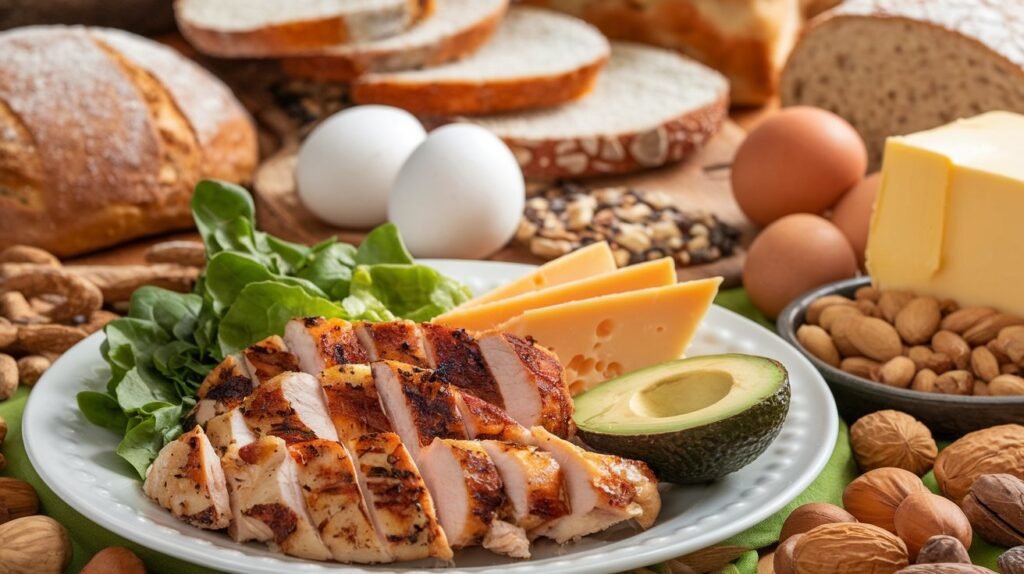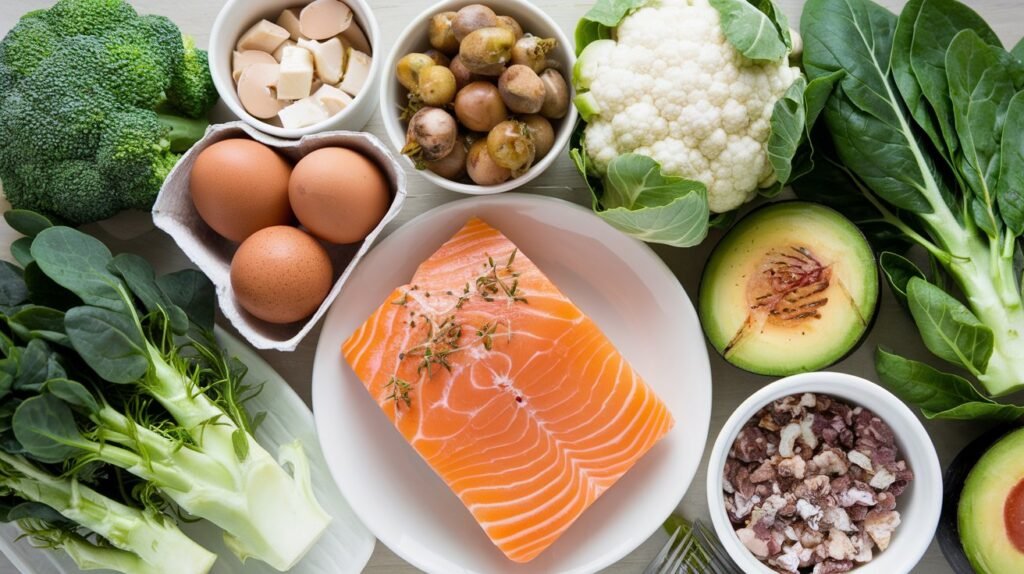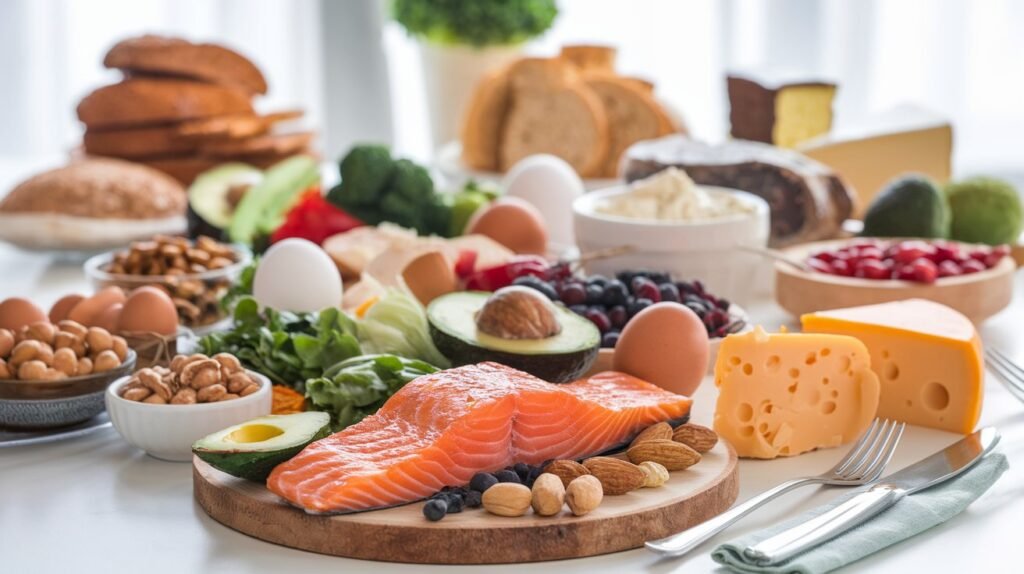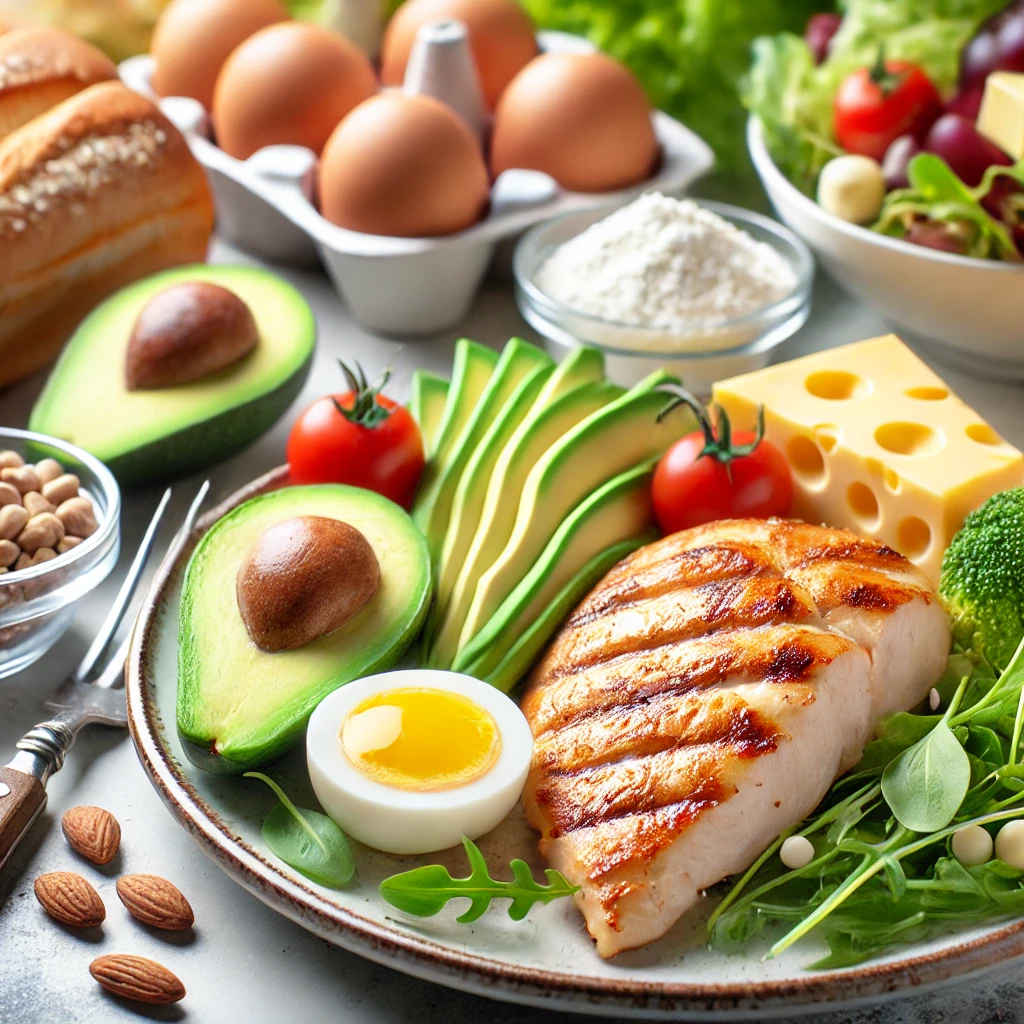Introduction
The Atkins Diet has been a popular low-carbohydrate approach to weight loss since the 1970s. Created by Dr. Robert Atkins, it promises quick and sustainable weight loss by encouraging dieters to reduce carbs and embrace fats and proteins. Over the years, the diet has gained a significant following due to its results and adaptability. This article will dive deep into the science behind the Atkins Diet, its phases, benefits, potential downsides, and comparisons to other diets.
Table of Contents
What is the Atkins Diet?
The Atkins Diet is a low-carbohydrate eating plan focused on limiting carbs to switch the body’s primary energy source from glucose (sugar) to stored fat. This metabolic shift is known as ketosis, where the body burns fat for energy instead of carbohydrates. The diet primarily encourages the consumption of protein and fats while drastically reducing the intake of carbohydrates.

How Does the Atkins Diet Work?
The diet’s primary mechanism is carb reduction. When carbs are limited, the body cannot rely on glucose for energy and starts burning fat, leading to weight loss. This process also results in ketone production, which the body uses for fuel in the absence of glucose.
The Four Phases of the Atkins Diet
The Atkins Diet is divided into four distinct phases, each with its own set of guidelines:
- Phase 1 – Induction:
- Goal: Start ketosis by cutting down carbohydrate intake to 20 grams per day.
- Duration: Two weeks or longer, depending on weight loss goals.
- Diet: Focus on proteins like meat, fish, eggs, and fats like butter and olive oil. Limit carb-heavy foods like bread, rice, and pasta.
- Phase 2 – Balancing:
- Goal: Slowly reintroduce low-carb vegetables, nuts, and seeds while maintaining ketosis.
- Duration: Continue until you’re within 10 pounds of your goal weight.
- Diet: Gradually increase carbs by 5 grams per week, but avoid high-sugar fruits and starchy vegetables.
- Phase 3 – Pre-Maintenance:
- Goal: Stabilize weight loss as you approach your goal weight.
- Duration: Continue until reaching your desired weight.
- Diet: Continue to add 10 grams of carbs per week, focusing on nutrient-rich foods like fruits and whole grains in moderation.
- Phase 4 – Maintenance:
- Goal: Maintain your goal weight without reverting to old eating habits.
- Duration: Lifetime.
- Diet: Keep carbohydrate intake around 50-100 grams daily while following the low-carb principles of the previous phases.
What Foods Can You Eat on the Atkins Diet?

The Atkins Diet emphasizes consuming high-quality proteins and fats while limiting carbs. Here’s a breakdown:
Foods to Eat:
- Proteins: Beef, pork, chicken, turkey, eggs, and fish.
- Fats: Olive oil, butter, cheese, and avocados.
- Vegetables: Leafy greens, broccoli, cauliflower, and zucchini.
- Low-Carb Fruits: Berries, tomatoes, and avocados (in moderation).
Foods to Avoid:
- Sugary Foods: Candy, soft drinks, and pastries.
- Starches: Bread, pasta, rice, and potatoes.
- High-Carb Fruits: Bananas, apples, and oranges.
Benefits of the Atkins Diet
- Rapid Weight Loss: Due to the body switching to burning fat for energy, many experience faster weight loss, especially in the early stages of the diet.
- Improved Blood Sugar Levels: The diet helps stabilize blood sugar levels by limiting carbohydrates, making it a popular choice for people with type 2 diabetes or prediabetes.
- Reduced Appetite: High-protein and high-fat diets tend to make people feel fuller for longer, helping to reduce calorie intake naturally.
- Better Heart Health: Some studies suggest that low-carb diets, including the Atkins Diet, can improve cardiovascular health by reducing triglycerides and increasing HDL (good) cholesterol.
Potential Drawbacks and Side Effects
While the Atkins Diet offers numerous benefits, there are also potential downsides to consider:
- Keto Flu: Many individuals report flu-like symptoms during the initial phases due to the body’s adaptation to ketosis. Symptoms include headaches, dizziness, nausea, and fatigue.
- Nutritional Deficiencies: Limiting fruits, vegetables, and whole grains can lead to nutrient deficiencies, particularly in fiber, vitamins C and D, and some minerals.
- Long-Term Health Risks: Some experts warn that long-term adherence to high-fat, low-carb diets may increase the risk of heart disease or kidney issues due to excessive protein intake.
How Does the Atkins Diet Compare to Other Diets?
The Atkins Diet is often compared to other low-carb diets like Keto and Paleo. Here’s a quick comparison:
| Diet | Carb Intake | Fat Intake | Focus | Benefits |
|---|---|---|---|---|
| Atkins | Low (20-100g/day) | Moderate to high | Weight loss, ketosis | Rapid weight loss, improved blood sugar |
| Keto | Very low (<20g/day) | High | Ketosis | Fast weight loss, epilepsy management |
| Paleo | Moderate (100-150g/day) | Moderate | Whole, unprocessed foods | Anti-inflammatory, promotes muscle gain |
Studies Supporting the Atkins Diet
Several studies have highlighted the potential benefits of low-carb diets like Atkins. In a 2003 study published in the New England Journal of Medicine, participants on the Atkins Diet lost more weight than those on a traditional low-fat diet over a six-month period.
Another study published in Annals of Internal Medicine in 2004 showed that individuals following low-carb diets like Atkins experienced more significant improvements in triglyceride levels compared to those on low-fat diets.

Atkins Diet for Different Goals
Weight Loss
The primary attraction of the Atkins Diet is its effectiveness for weight loss. By reducing carbohydrate intake, the body shifts to burning fat for energy, which often leads to rapid weight loss in the initial phases. Over time, as carbohydrate intake increases slightly, weight loss continues more steadily but is sustainable long-term.
Managing Diabetes
The Atkins Diet has been shown to help individuals with type 2 diabetes manage blood sugar levels. By drastically reducing carbohydrates, blood glucose levels stabilize, potentially reducing the need for insulin or other medications.
Improved Metabolism
One of the often-touted benefits of the Atkins Diet is its effect on metabolism. As the body becomes more efficient at burning fat for fuel, individuals often report increased energy levels and improved metabolic markers like cholesterol and triglycerides.
Statistics on the Effectiveness of Low-Carb Diets
Several studies have underscored the efficacy of low-carb diets like Atkins in weight loss and metabolic health. Here’s a breakdown of some key findings:
| Study/Source | Results |
|---|---|
| New England Journal of Medicine (2003) | Participants on Atkins lost an average of 4.7 kg in six months, compared to 2.2 kg on a low-fat diet. |
| Annals of Internal Medicine (2004) | Low-carb dieters had a 14% greater reduction in triglycerides compared to low-fat dieters. |
| The Journal of American Medical Association | Low-carb dieters showed improved HDL cholesterol levels after 12 months compared to low-fat diets. |
Sample Atkins Diet Meal Plan
Here’s an example of what a day on the Atkins Diet might look like:
| Meal | Foods |
|---|---|
| Breakfast | Scrambled eggs with bacon, sautéed spinach, and avocado. |
| Lunch | Grilled chicken breast with mixed greens, olive oil, and feta cheese. |
| Snack | A handful of almonds or celery sticks with cream cheese. |
| Dinner | Grilled salmon with a side of roasted Brussels sprouts and butter. |
Conclusion
The Atkins Diet remains a popular choice for those seeking rapid weight loss and improved metabolic health through a low-carbohydrate approach. While it offers numerous benefits, it’s essential to approach it with balance and monitor for any potential health risks. Consulting with a healthcare provider before starting any diet plan is recommended, especially for those with pre-existing conditions.
References:
- Foster GD, Wyatt HR, Hill JO, et al. “A Randomized Trial of a Low-Carbohydrate Diet for Obesity.” New England Journal of Medicine, 2003.
- Samaha FF, Iqbal N, Seshadri P, et al. “A Low-Carbohydrate as Compared with a Low-Fat Diet in Severe Obesity.” New England Journal of Medicine, 2003.
- Gardner CD, Kiazand A, Alhassan S, et al. “Comparison of the Atkins, Zone, Ornish, and LEARN Diets for Change in Weight and Related Risk Factors among Overweight Premenopausal Women.” JAMA, 2007.
- Nordmann AJ, Nordmann A, Briel M, et al. “Effects of low-carbohydrate vs low-fat diets on weight loss and cardiovascular risk factors: a meta-analysis of randomized controlled trials.” Archives of Internal Medicine, 2006.




